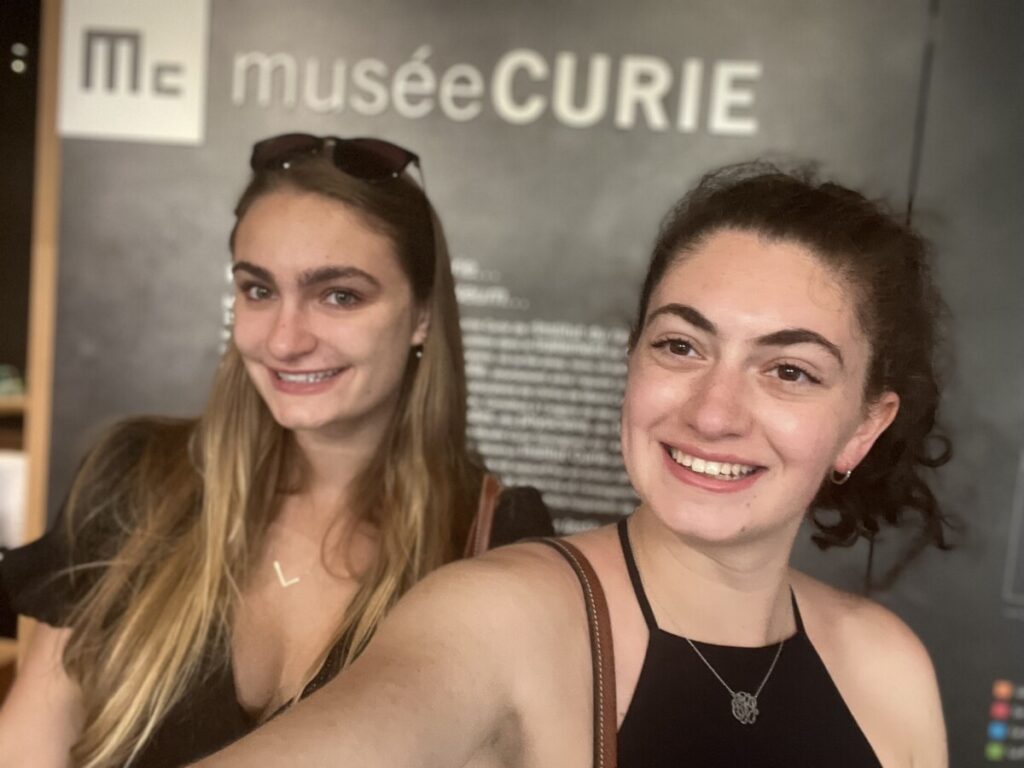On June 15th, 2022, Cynthia, Sam, Alyssa, and I visited the Marie Curie Museum, located down the street from the Pantheon, where Marie and Pierre Curie are both buried. I was very excited to go to this museum and have been talking about it for the past few weeks because of the importance of Curie’s work in the field of oncology. The museum is located at the former Radium Institute, now called the Institut Curie, and featured Curie’s (decontaminated) lab, office, and garden. Curie spent the last 20 years of her life as the first director of Curie Laboratory at the Radium Institute, where she ensured her lab comprised of 25% of the women, before passing away from leukemia in 1934. I noticed Curie’s lab was smaller than most labs I have seen at Emory or during my research at Children’s Hospital of Philadelphia, which begs the question of whether things in the United States are just larger or if labs in the past were built smaller. The museum displayed a replication of the 1902 lab book entry by Marie and Pierre Curie estimating the atomic mass of Radium and outlining the various steps of their calculations. It’s insane to think that the original page is still dangerously radioactive over 100 years later.

Marie Curie was a Polish and nationalized-French physicist and chemist who won two Nobel Prizes for her work with radioactivity. She developed contact curiethérapie, known as brachytherapy in English, a technique still used today for the treatment of cancer. Brachytherapy can be used for the treatment of a variety of cancers, including prostate, cervix, breast, vagina, endometrium, and head and neck cancers and has been shown to be an effective and safe non-pharmaceutical treatment with fewer serious complications and better outcome than other treatments for breast cancer (Deng et al., 2017). Brachytherapy has also been found to treat brain tumors with high doses of radiation while sparing the healthy surrounding tissue and can be used as a primary treatment, an adjuvant treatment, or as therapy for recurrence of some malignant gliomas, low-grade astrocytomas, meningiomas, metastases, and pediatric brain tumors (Suh et al., 1999).

I find it amazing that, even after almost a century, the science Marie Curie lived (and died) for continues to help patients around the world. She truly is an inspiration to all young girls interested in science and medicine. It was a wonderful experience to step back into the past and learn about radiation, cancer research, and the life of Marie Curie.
Citations:
Deng, X., Wu, H., Gao, F., Su, Y., Li, Q., Liu, S., & Cai, J. (2017). Brachytherapy in the treatment of breast cancer. International journal of clinical oncology, 22(4), 641–650. https://doi.org/10.1007/s10147-017-1155-5
Suh, J. H., & Barnett, G. H. (1999). Brachytherapy for brain tumor. Hematology/oncology clinics of North America, 13(3), 635–ix. https://doi.org/10.1016/s0889-8588(05)70080-0
